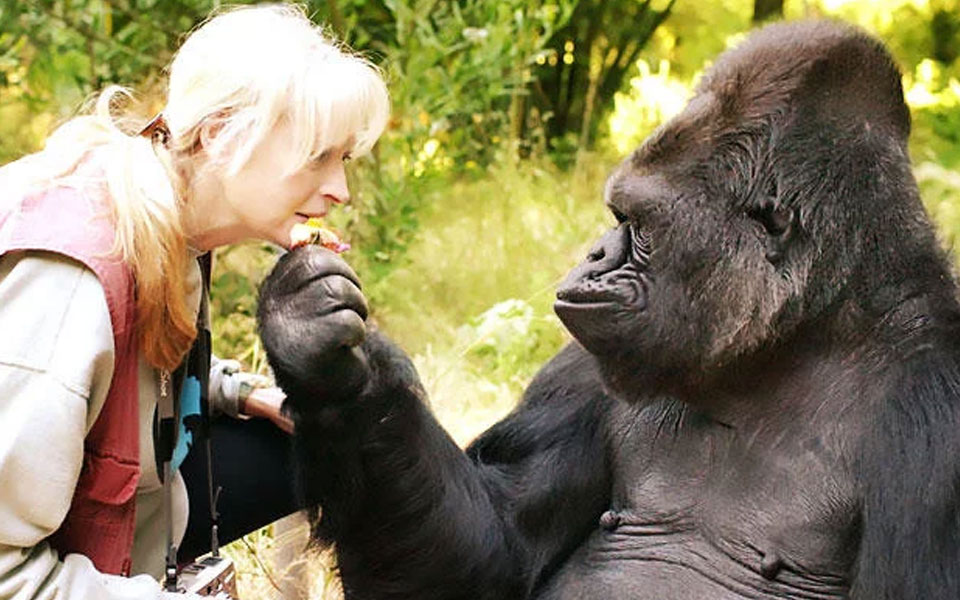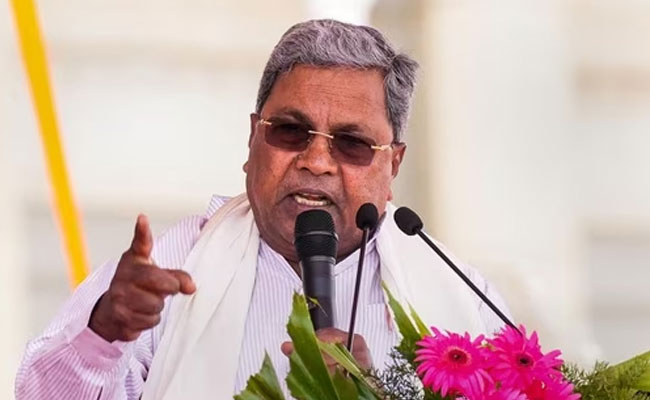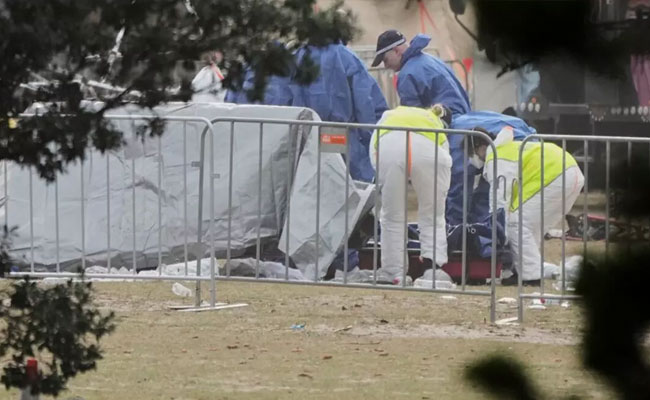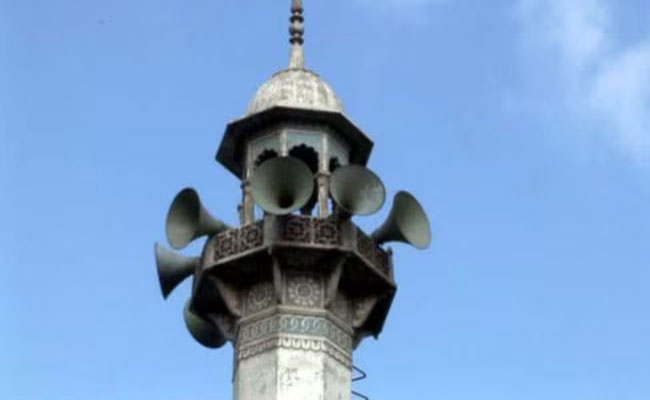New York, June 22 : Koko the gorilla, who appeared on National Geographic magazine cover, could chat, tease and even argue with scientists using more than 1,000 hand signs, has died in California at the age of 46.
Koko -- the primary ambassador for her endangered species, who redrew the lines of animal-human communication -- passed away on Tuesday in her sleep, a Gorilla Foundation press release said.
At birth, she was named Hanabi-ko -- Japanese for "fireworks child", because she was born at the San Francisco Zoo on July 4 in 1971. She was a western lowland gorilla.
"Her impact has been profound and what she has taught us about the emotional capacity of gorillas and their cognitive abilities will continue to shape the world," the Gorilla Foundation said.
Throughout her life, Koko's abilities made headlines. After she began communicating with humans through American Sign Language, she was featured by National Geographic - and she took her own picture (in a mirror) for the magazine's cover.
That cover came out in 1978, seven years after Koko was chosen as an infant to work on a language research project with the psychologist Francine "Penny" Patterson.
In 1985, the magazine profiled the affectionate relationship between the gorilla and her kitten: Koko and All Ball.
Koko, who also apparently understood some spoken English. Instructors taught her a version of American Sign Language and say she used it to convey thoughts and feelings, the BBC reported.
She adopted and named pets, including her kitten, All Ball.
Some scientists have cast doubt on the extent of the gorilla's communicative skills. However, she was the subject of many documentaries.
When her tailless tabby kitten All Ball escaped and was killed by a car in 1984, Dr Patterson wrote that she had displayed grief.
Koko lived most of her life at the Gorilla Foundation in California. She was filmed meeting the late actor Robin Williams in 2001.
Koko amazed scientists in 2012, when she showed she could learn to play the recorder. The feat revealed mental acuity but also, crucially, that primates can learn to intricately control their breathing - something that had been assumed to be beyond their abilities.
Let the Truth be known. If you read VB and like VB, please be a VB Supporter and Help us deliver the Truth to one and all.
Bengaluru (PTI): Karnataka Chief Minister Siddaramaiah on Tuesday said that the union government led by Prime Minister Narendra Modi, attempting to change the name and structure of the MGNREGA, has itself exposed its "hatred" towards the poor and towards Mahatma Gandhi.
He also accused the Centre of "altering" the very structure of the scheme, by shifting nearly 40 per cent of the cost onto the state governments, and called Modi "anti federal".
Suggesting that the NDA government at the Centre start a "Ministry of Name Change", with the Prime Minister himself holding that portfolio, the CM warned of a statewide agitation against this name change move.
The Viksit Bharat Guarantee for Rozgar and Ajeevika Mission (Gramin) (VB-G RAM G) Bill, 2025, that seeks to replace the existing rural employment law MGNREGA, was introduced in the Lok Sabha on Tuesday amid strong objections by the opposition to the "removal" of Mahatma Gandhi's name from it.
ALSO READ: Slain Australia beach shooting suspect native of Hyderabad: T'gana police
"The Union government led by Prime Minister Narendra Modi, which is attempting to change the name and structure of the Mahatma Gandhi National Rural Employment Guarantee Scheme (MGNREGA), has itself exposed its hatred towards the poor and towards Mahatma Gandhi," Siddaramaiah said in a statement.
Implemented by the UPA government 20 years ago, the MGNREGA scheme has played a crucial role in eradicating unemployment and poverty in rural areas, he said, adding that "this scheme, which guarantees the right to employment to every individual, has received praise from economists both in India and abroad."
Noting that MGNREGA was a genuine form of employment guarantee, the CM said the proposed new structure under the Modi government strips away that guarantee and places the assurance of work at the whims of political leaders.
"This will further deepen caste discrimination and social inequality," he claimed.
Highlighting that the NDA government has altered the very structure of MGNREGA, a scheme whose entire expenditure was earlier borne by the Central government, by shifting nearly 40 per cent of the cost onto the state governments, Siddaramaiah said this stands as clear evidence of the "anti-federal attitude" that Prime Minister Modi has followed ever since coming to power.
"This move will also increase the migration of poor people in search of work as the proposed form does not guarantee employment in their own location -- forcing families to travel long distances to survive," he said.
Naming this scheme after Mahatma Gandhi, who sowed the dream of Gram Swaraj, was a meaningful decision, the CM said, "While Prime Minister Narendra Modi indulges in praising Gandhi during his foreign tours, within the country he has consistently engaged in attempts to erase Gandhi's legacy from key national programmes. From a parivar that seeks to glorify Gandhi's assassin Godse, what different conduct can one really expect?"
"Narendra Modi is widely known for simply changing the names of landmark schemes launched by the UPA government rather than preserving or strengthening them. It would be more appropriate for this government to start a 'Ministry of Name Change,' with the Prime Minister himself holding that portfolio," he said.
More than 25 flagship programmes launched during earlier governments were merely renamed or repackaged by the present regime, the CM further said, listing out that the Nirmal Bharat Abhiyan was rechristened as the Swachh Bharat Mission, while the Basic Savings Bank Deposit Account scheme was rebranded as the Pradhan Mantri Jan Dhan Yojana, among others.
"These changes reflect a consistent pattern of altering names rather than fundamentally strengthening or expanding the original intent of these welfare initiatives," he added.
Stating that the Congress party and state government strongly condemn this "anti-people" decision of the Narendra Modi government, which has snatched food from the plates of the poor, insulted Bapu, and attempted to strangle state governments financially, Siddaramaiah warned about launching a statewide agitation against this move.
"The responsibility of preserving the MGNREGA scheme in its original form must also be taken up by the lakhs of beneficiaries of the scheme. They must hold the BJP leaders of the state accountable and exert pressure on them to raise their voices against this injustice, rising above party lines," he said.





